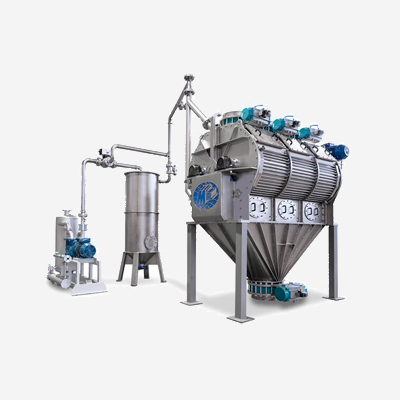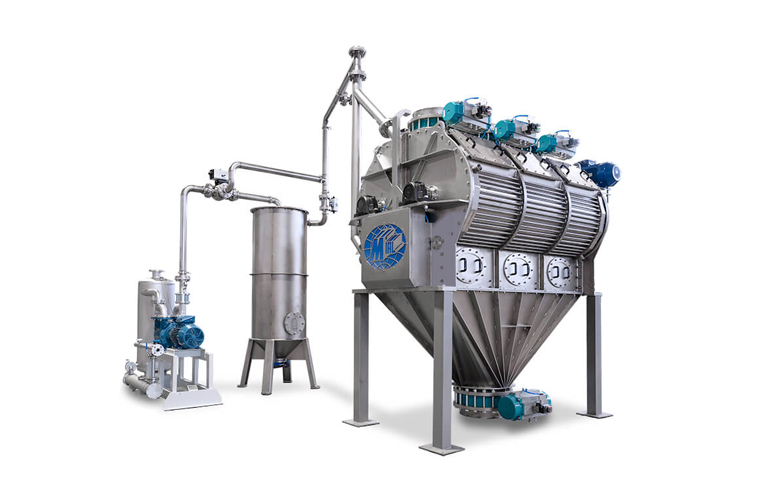

HOME > Industry > Animal Feed > Vacuum Mixer / Coater for Pet Food and Fish food

The major limitation of traditional types of coaters is the amount of total fat they can apply, which is a problem with feeds for aquatic species that require high-density diets with oil coatings that exceed 15 percent.
Vacuum-coating systems offer a method by which to more effectively use higher levels of liquid additives coating that allow the addition of liquids up to 40 percent.
Compared to atmospheric systems, up to 80 % extra liquid additives could be added to pellets coming from the pellet presses.
TiERMAX offers Vacuum Coater Mixer for Pet Food, Fish Food and feed industries which enabled feed producers to apply liquid additives to and into pellets and extruded products, by creating a vacuum environment within the production process.
Our vacuum coater mixers combine a double-paddle mixer with the vacuum system. Double-paddle mixers ensure proper mixing of the pellets with the oil, which is applied from spray nozzles located at strategic locations to ensure proper dispersion onto the feed.

After the production of feed extrudates, pellets or porous products, the vacuum coater enables the refinement of the product with liquids.
In the vacuum-coating process, vacuum is applied to remove air from the feed pores, leaving them as open cells. Once the vacuum pressure is achieved, the product is sprayed with liquid additives during the vacuum.
Once the liquid addition sequence is completed under vacuum, the vacuum pressure is released slowly back to atmospheric pressure. This creates a pressure differential that forces the liquid into the voids or pores of the pellets. However, if the pressure equilibration is done too fast, there is the risk of piercing the liquid film coating and allowing air back into the open pores.
– By using vacuum coating technology, the additives penetrated homogeneously into the entire pellet. This resulted in better, more nutritious feed and food, healthier animals, and less emissions.
– The subsequent application of several liquids is also possible. This has the advantage that the first liquid is inside the product and is surrounded by the second liquid in the pellet. Thus, sensitive additives can be protected, for example, or their taste can be masked. Since the vacuum coating process is carried out after the actual manufacture of the product, the defined addition of heat-sensitive additives is no problem. Extrudates with a larger pore volume absorb more liquid than comparatively dense pellets.
– Extremely precise feeding, weighing and dosing of liquids and powders.
– No contamination and very high hygiene standards.
– Protecting the kibbles from possible crumbling.
let's find a solution to your production challenge together